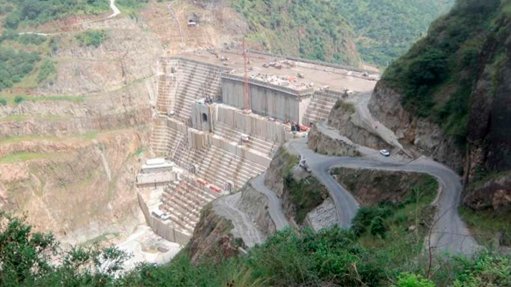
Ethiopia’s second biggest hydroelectric power plant, the 1 870 MW Gibe III Hydro project, which was commissioned this year, has started test trials and is generating 500 MW of electricity into the national grid, an official has said.
This brings Ethiopia one step closer to solving chronic power shortages, which the government has blamed on drought conditions, that have left businesses and homes struggling to meet their daily needs.
The biggest hydro-electric generator by far will be the 6 000 MW plant on the Grand Ethiopian Renaissance Dam (GERD) on the Blue Nile river where construction began in April 2011 and is halfway complete, according to the Ethiopian government.
Engineer Azeb Asnake, CEO of the publicly-owned Ethiopian Electric Power (EEP) corporation, said five of Gibe III’s ten turbines have started generating power.
The ten turbines each have generating capacity of 187 MW, although current drought conditions means the five operational turbines aren’t producing their maximum capacity.
Like GERD, the Gibe III dam has had its fair share of controversies, with international environmental activist groups alleging it will endanger the livelihoods of hundreds of thousands of people in southern Ethiopia and northeast Kenya.
They have also warned that it will endanger the existence of the world’s largest desert lake, Lake Turkana, which Ethiopia and Kenya share. The Ethiopian government denies both allegations.
The Ethiopian government’s ambitious five-year development plan called Growth and Transformation Plan I (GTP I) 2015-2020 envisages increasing electricity generation capacity from the current 4 400 MW to 17 300 MW to power the country’s economic growth.
Most of this will be generated by hydro plants, though geothermal, solar, waste and wind power are also part of the mix.
Ethiopia’s drought, which aid agencies have said is the most severe the country has faced in decades, has left more than ten-million people in need of food aid.